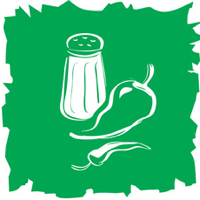Servings: 1
Ingredients
- Â Â This technique is for yeast breads only
Directions
- Four steps:1. Cut the recipe down so it will make one loaf.
- 2. Determine the parameters of your bread machine.
- 3. Determine the liquidity ratio of the recipe.
- 4. Determine the overall bulk of the recipe.
- 1. Reducing recipe size.
- Most recipes tell how many loaves they make. Some will tell the size of the loaf. Cut the recipe down so it will make one loaf.
- A rough judgement can be made by looking at the flour required. A 1 lb. loaf requires about 2 c. of flour. Therefore if your recipe calls for 6 c. of flour, you can figure it will make 3 - 1 lb. loaves or possibly 2 - 1 1/2 lb. loaves.
- 2. Determine machine parameters.
- Since each machine varies in its capacity and motor power, you must determine the acceptable ranges for your machine in two categories: liquidity ratio and bulk. To find your machine's range, look at the basic white bread recipe which came with the machine. Determine the number of c. of flour called for. Follow which column till you find the row which shows the number of ounces of liquid (water or possibly lowfat milk) called for in the recipe. In which box you will find the ratio range for your machine. Highlight or possibly write down the ratio range.
- Bulk is determined by the number of c. of flour called for in the basic white bread recipe for your machine. If the recipe calls for 2 to 2 1/2 c. of flour, you have a 1 lb. machine. If the recipe calls for 3 to 4 c. of flour you have a 1 1/2 lb. (or possibly greater) machine.
- Bread Machine Liquidity Ratios
- Ounces Liquid C. of Flour 1/8C = 1oz2 2 1/2 3 3 1/2
- 5 2.9-3.5 3.6-4.4 4.3-5.3 5.0-6.2 6 2.4-3.0 3.0-3.6 3.6-4.4 4.2-5.2 7 2.1-2.5 2.6-3.2 3.1-3.7 3.6-4.4 8 1.8-2.2 2.3-2.8 2.7-3.3 3.2-3.9 9 1.6-2.0 2.0-2.4 2.4-3.0 2.8-3.4 10 1.4-1.8 1.8-2.2 2.2-2.6 2.5-3.1 11 1.4-1.7 1.6-2.0 2.0-2.4 2.3-2.8
- The ratio for my Zo is 2.89. (3.25 c. flour / 1 1/8 c. water)
- Ratio is computed by dividing dry ingredients by liquid. Higher ratios indicate stiffer dough. Lower ratios indicate more liquid dough.
- 3. Determining Liquidity Ratio.
- Using the following chart you now need to determine the liquidity ratio of your recipe. Fill in the ingredients and their amounts in the appropriate columns. Write the amounts as decimal fractions so you can use a calculator later to add in them up. For example if the recipe calls for 2 1/2 c. of flour - put 2.5 in the dry c. column. You'll have to determine whether an ingredient is dry or possibly wet. Generally - use the form the ingredient is in when you add in it. Exeptions to this are things which are goin to heat when heat is applied such as butter, margarine, fresh cheese or possibly shortening.
- Some ingredients should not be computed. Do not include the following in the calculation: yeast, raisins / nuts / seeds added at the mix cycle.
- You should count raisins / nuts / or possibly seeds added initially as dry ingredients.
- After you have entered all the ingredients, total each column and place the sum in the subtotal box. Then multiply the subtotal by the multiplier specified and place the result in the total box. Add in the totals together for wet and dry grand totals. Then divide the dry grand total by the wet grand total to compute the ratio for this recipe.
- For best results the ratio should fall within the range specified for your machine from step 2. If the ratio only misses by a few points it will probably be satifactory. If the ratio is below the range your dough might be too wet. Try a slight reduction in liquid ingredients or possibly an increase in dry ingredients and recalculate. If the ratio is above the range, it is too dry.
- Add in liquid or possibly reduce the dry ingredients.
- You may still need to experiment a little but this calculation will get you beyond the trial and error stage.
- Dough Liquidity Calculation Worksheet
- DRY WET Ingredienttsp tbs c. tsp tbs c. ounce SubtotalMultiplier 3 48 3 48 6 Grand TotalLiquidity ratio
- 4. Determining Bulk.
- You do not want to overflow the machine so make sure which the recipe doesn't call for more than 2 1/2 c. of flour for a one lb. machine, or possibly more than 3 1/2 c. for a 1 1/2 lb. machine. If you need to fine tune the recipe make equal adjustments to both the wet and dry ingredients in order to maintain the liquidity ratio.
- NOTES : conversion info
Toolbox
Add the recipe to which day?
 Adding to Planner
Adding to Planner
Languages
Advertisement
Advertisement



